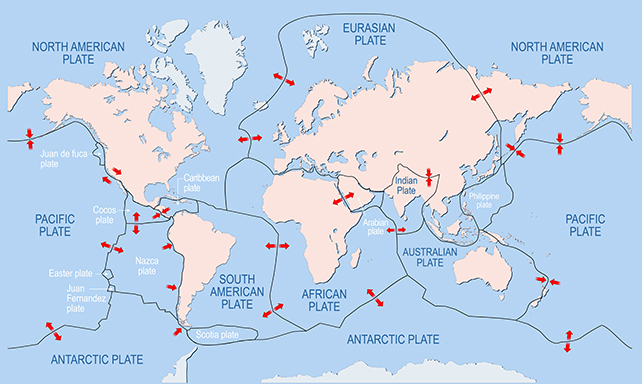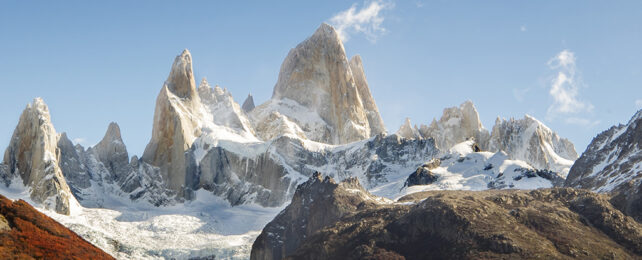By any measure, the Andes mountains are very, very big. Running for some 8,900 kilometers (5,530 miles) through South America, they reach up to 7 kilometers (4.3 miles) in height and stretch up to 700 kilometers (435 miles) in width.
But how did the range grow to this gigantic scale? Plate tectonics – the movement of great slabs of Earth's crust across the planet – can create mountain ridges as slower sections are forced up by faster moving regions.
Though the concept is simple in theory, tracking the speed of tectonic movements across timescales shorter than 10 to 15 million years in duration is tricky for geologists.
Researchers from the University of Copenhagen used a recently developed method to get a more detailed look at the movement of the South American plate that formed the Andes. They identified a 13 percent slowdown in parts of the plate around 10 to 14 million years ago, and a 20 percent slowdown 5 to 9 million years ago – enough to explain some of the features we see today.

"In the periods up until the two slowdowns, the plate immediately to the west, the Nazca Plate, plowed into the mountains and compressed them, causing them to grow taller," says geologist Valentina Espinoza from the University of Copenhagen in Denmark.
"This result could indicate that part of the preexistent range acted as a brake on both the Nazca and the South American plate. As the plates slowed down their speed, the mountains instead grew wider."
The technique used in the study starts with absolute plate movement (APM), the movement of plates in terms of fixed points on Earth. APM is mostly determined through the study of volcanic activity in the crust, where trails of magma tell geologists how the plates have shifted.
Then there's relative plate movement (RPM), the movement of plates in relation to each other. This is calculated using a broader range of clues, including magnetization data embedded in the ocean floor signifying rock movement, and offers higher resolution (smaller timescale) data than APM.
To determine the rate of movement in the South American plate, the geologists used the high-resolution RPM data to estimate APM via some detailed math. By validating predicted data with geological data that we are sure of, the method enables experts to know much more about the interactions between tectonic plates.
"This method can be used for all plates, as long as high-resolution data is available," says geologist Giampiero Iaffaldano, from the University of Copenhagen.
"My hope is that such methods will be used to refine historic models of tectonic plates and thereby improve the chance of reconstructing geological phenomena that remain unclear to us."
The team also considered the question of why these two significant slowdowns happened in the first place. While a few million years is a long time to us, it's a virtual eye-blink in geological time scales.
One possibility is convection currents in the mantle changed, shifting different densities of material around. It's also possible that a phenomenon called delamination was responsible, where significant parts of a plate sink lower into the mantle. Both events would've had knock-on effects that influenced the rate of the plate's movement.
Further research and more data is going to be needed to know for sure, and the new method of analysis will help with that. Even as one question is (perhaps) answered, there are plenty more to work through.
"If this explanation is the right one, it tells us a lot about how this huge mountain range came to be," says Espinoza.
"But there is still plenty that we don't know. Why did it get so big? At what speed did it form? How does the mountain range sustain itself? And will it eventually collapse?"
The research has been published in Earth and Planetary Science Letters.
